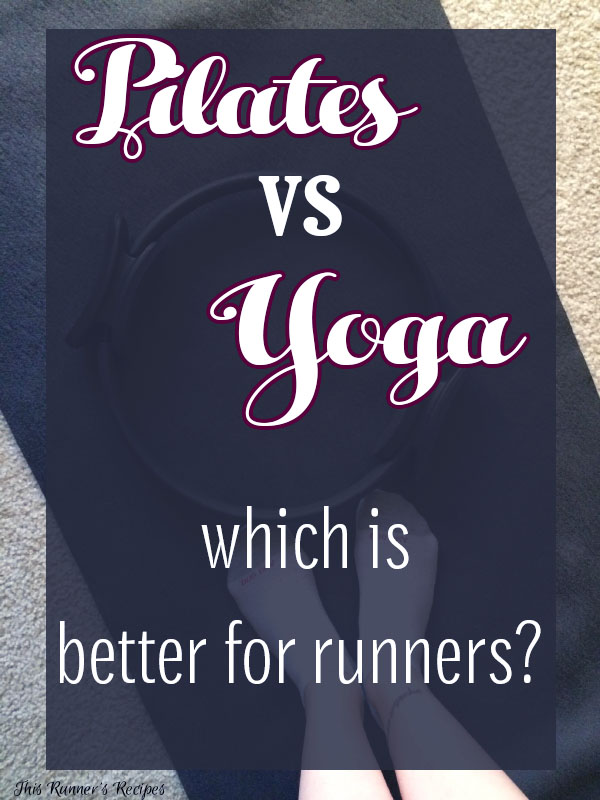
Yoga can cause musculoskeletal injuries in many people. Wrist-weighted postures pose a high risk for injury. However, there are ways to minimize this risk. Incorrect wrist alignment can lead to sprains, and breaks. These exercises require that the wrist and fingers be held firmly and evenly. You can avoid these types of injuries by adopting safe positions and following the instructions.
Research shows that yoga injuries are on the rise. The number of injuries has increased from 13 in 2000 to twenty in 2001, and from eight to 46 in 2002. The Consumer Product Safety Commission's survey relies on sampling, and doesn't give the whole picture. Only a small percentage of yoga injury victims end up in emergency rooms. The majority seek out care from their family physicians, chiropractors and massage therapists. While yoga may be an effective way to prevent injuries, it is important to understand the limitations of research.
Improper alignment is often the cause of injuries in yoga. Improper alignment can lead to injury. Proper alignment is key to avoiding injury during yoga. Additionally, it is important that your teacher receives proper training in biomechanics. To ensure a safe and efficient class, you must have the correct body mechanics. You run the risk of getting injured if your instructor isn't familiar with the right technique.

The shoulder muscles, as well as the rotator and shoulder muscles, are at greatest risk of injury. Rotator and hand injuries can also result from binds linking wrists and hands while in a pose. Sun salutations are a series involving poses that put the body's burden on the upper extremity. They are often associated with impingement of your rotator. These positions can be dangerous if you do too much stretching or forward bending, and are repetitive and repetitive.
There are many types of injuries that yoga practitioners can sustain. Most common injuries are those involving muscles and joints. They are not serious and do not usually require medical attention. Yoga poses can be beneficial to your health if you have an existing condition. Overexertion can cause injury to your shoulder and rotator-cuff muscles. It is important to pay attention to the rotator wrist and ensure it is working properly.
You should not do dangerous yoga poses. However, there are common injuries that can occur. Text neck is the most common. It occurs when people are too dependent on their phones. The neck muscles are susceptible to injury, so avoiding these positions can prevent injury. The more you practice, you will see the benefits. Many factors can cause injuries in yoga. However, there are many things that you can do to prevent them.
The low back is a common injury in yoga. A low back injury can be caused by excessively curved or twisted joints. If you have suffered from an injury in the past, this condition can occur by doing certain poses that are not properly aligned. The shoulder injury is the most common in yoga. This can happen if the shoulder is overworked. The upper extremities may be affected by injuries to the clavicle or humerus as well as the scapula.

Improper technique is what causes most yoga injuries. An injury can be caused by overtraining your neck, hips, or other joints. An orthopedist may recommend that you pay attention to your body and refrain from taking on any positions that are too difficult. Doing too much can strain the neck. It takes time to heal a neck strain. Avoid doing intense yoga. This will help avoid any future complications.
While the incidence of yoga-related injuries is low, it is important to know that certain postures can cause pain, which can be painful. These types of injuries are rare, however. These injuries can be caused by repetitive strain or overstretching. Yoga injuries are more common when the poses are not properly warm up or if they are performed incorrectly. If the practitioner isn't aware of the potential risks associated with the poses, it can lead to injuries.
FAQ
Can I consume alcohol while working out?
Yes. Alcohol has increased energy expenditure, speed up recovery time, and reduced soreness.
Additionally, alcohol can increase insulin sensitivity and make it easier to absorb glucose.
Dehydration can result from alcohol, which can affect your metabolism. You may also experience a reduction in testosterone production which can lead to decreased muscle-building potential.
For these reasons, women shouldn't drink alcoholic beverages before working out. Women who drink heavily should wait at the least 24 hours before exercising.
Breastfeeding women should stay away from alcohol.
Men should drink only one glass of alcohol per day.
What does butter have to do with men?
Butter is one source of saturated fats. This fat is good for hair and skin health, as well as stronger bones.
Vitamin K, found in butter is an antioxidant that prevents bleeding from cuts. Vitamin K is combined with vitamin C to prevent bruises.
Butter is also rich with minerals, such as calcium and phosphorous. These minerals promote stronger bones, teeth, and teeth.
Butter is not without its flaws. Butter is high in cholesterol. Some studies show that consuming too much cholesterol may increase the risk of developing cardiovascular disease.
Butter also contains high amounts of saturated fat, which contributes to obesity and increases cholesterol.
But if butter is a must, you can spread it on bread and not dip it in soups or salads. Bread absorbs more oil than potatoes or pasta.
Do I have to do it every day?
No! No! This could be walking fast enough so you feel slightly out breath or cycling hard enough to sweat.
Statistics
- Cardmembers earn 5% Back at Amazon.com with a Prime Credit Card. (amazon.com)
- An estimated calorie range for moderately active adult males falls between 2,200 to 2,800 calories per day, depending on age. (eatright.org)
- Are You One of the 20% of Guys (mh.co.za)
- According to the American Heart Association, blood pressure should be checked at least once every two years, beginning at age 20. (my.clevelandclinic.org)
- The PRS enabled risk stratification for overall prostate cancer and lethal disease with a four-fold difference between men in the highest and lowest quartiles (HR, 4.32; 95% confidence interval [CI], 3.16-5.89). (pubmed.ncbi.nlm.nih.gov)
External Links
How To
How can I burn fat while exercising?
Exercise helps you lose calories by increasing your metabolism and oxygen intake.
Moderate intensity exercise is a safe way to lose weight.
These tips will help you burn fat and keep fit while exercising.
-
Cardio exercises include swimming, running or cycling.
-
Three times per week, exercise for 30 minutes.
-
Strength training is a great way to lose weight.
-
Avoid intense workouts. You can build muscle without breaking down muscle tissue.
-
When exercising, make sure to drink lots of water. Water is essential for flushing out toxins and keeping your body hydrated.
-
After exercising, you should drink low-fat protein drinks. Protein shakes boost energy and repair muscle tissue.
-
You can eat smaller meals throughout the day so that you don't feel hungry in between meals.
-
Don't skip breakfast! You can feel tired and slow if you skip breakfast.
-
Take care of your mind. Stressful situations may slow down your metabolism.
-
Keep a positive attitude. Research shows that overweight people gain more weight if they believe they are overweight than those who believe they look good.
-
Sleep enough. Insufficient sleep can make it more difficult to lose weight.
-
Keep active. Be sure to get up and move around every hour or two.
-
Maintain a healthy diet. A healthy diet will help you feel fuller for longer.
-
Find ways to relax. A tense mind doesn't allow your body to release stress hormones that break down muscle tissue.
A balanced diet provides all the nutrients necessary for growth and development.
You should eat six small meals per day rather than three large ones. This gives your body time and energy to process the food.
Calcium is required to support strong bones. Calcium can be found in dairy products such as yogurt, fortified soybean beverages, orange juice, cereals, bread, and cereals.
Calcium is found in leafy green vegetables and beans, tofu as well as nuts, seeds, cheese, and seeds.
Your body needs vitamin D to absorb calcium. It's found in fatty fish, egg yolk, and some fortified foods.
Vitamin E is crucial for skin health. Vitamin E can also be found in vegetable oil, wheat germ oils, peanuts as well almonds, sunflower seeds and corn.
Your body requires zinc for normal immune function and wound healing. Zinc is found in seafood, oysters legumes meats, whole grains, whole grains and meats.
Zinc deficiency may cause fatigue, loss appetite, depression, and impaired immunity.
Consuming too much sugar can cause insulin resistance. This causes an increase in blood glucose levels. Insulin resistance can lead to weight gain.
Insulin resistance develops when there are high levels of free radicals in the bloodstream. Free radicals can be molecules with unpaired electrons that cause damage to cell membranes.
Free radicals come mainly from food additives, pesticides, herbicides, preservatives, smoking, air pollution, radiation, chemicals in cosmetics, lotions, and household cleaning supplies.
Free radical damage can lead cancer, heart disease or diabetes, arthritis, asthma, or other forms of aging.
Eating a well-balanced diet with antioxidants is the best way to prevent free radical damage. Antioxidants protect against oxidative damage.
Vitamin C (found on citrus fruits), Beta carotene, found in carrots and sweet potatoes, spinach and broccoli, cantaloupe (found in tomatoes, mangoes and peppers), and Vitamin E (found nuts, olive oil and avocados).
Selenium, manganese (and zinc) are other antioxidant nutrients.
Selenium helps protect cells from oxidative damage caused by free radicals. Selenium is found in Brazil nuts, tuna, liver, kidney, shrimp, cod, turkey, beef, lamb, pork, and chicken.
Copper protects the brain, eyes, lungs, and red blood cells. Copper is found in shellfishes, poultry, meat, organ meats, and other foods.
Manganese plays an important role in bone structure. Manganese is found in brown rice, spinach, bananas, prunes, raisins, oatmeal, and lentils.
Zinc is important for healthy growth, reproduction, and wound-healing. Zn can also be found in white fish, lean cuts of meat, poultry, and eggs.